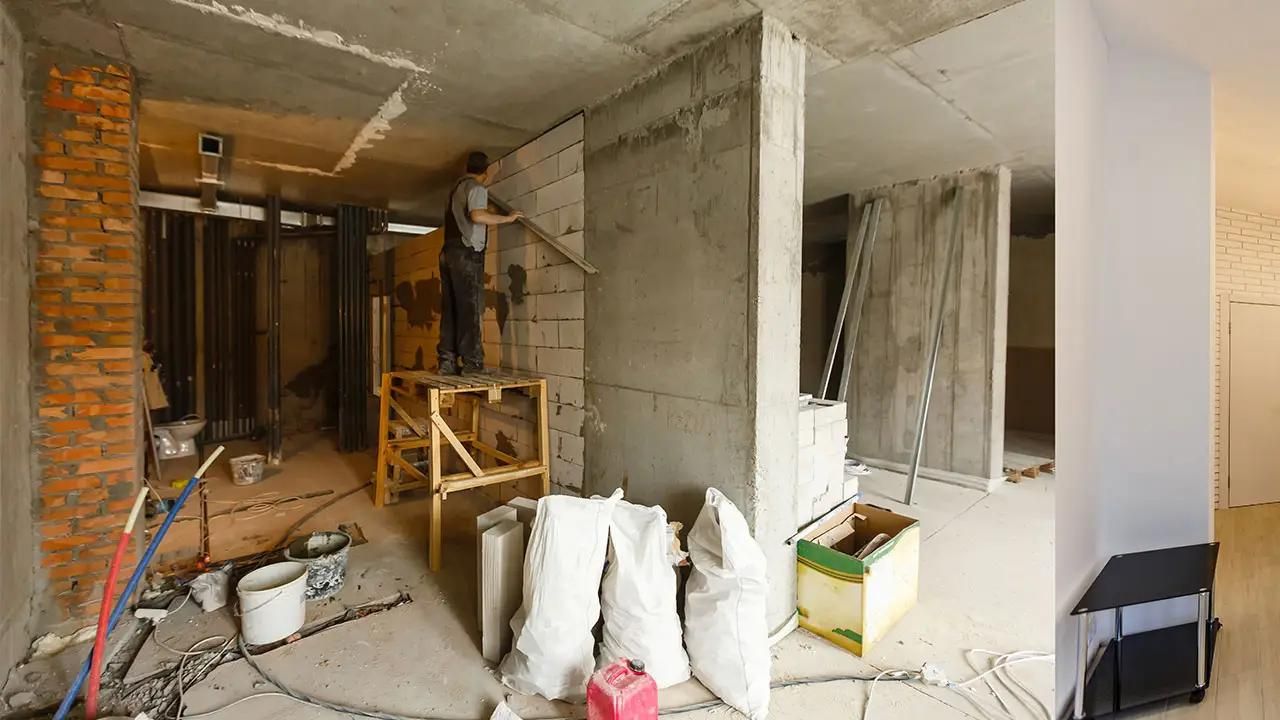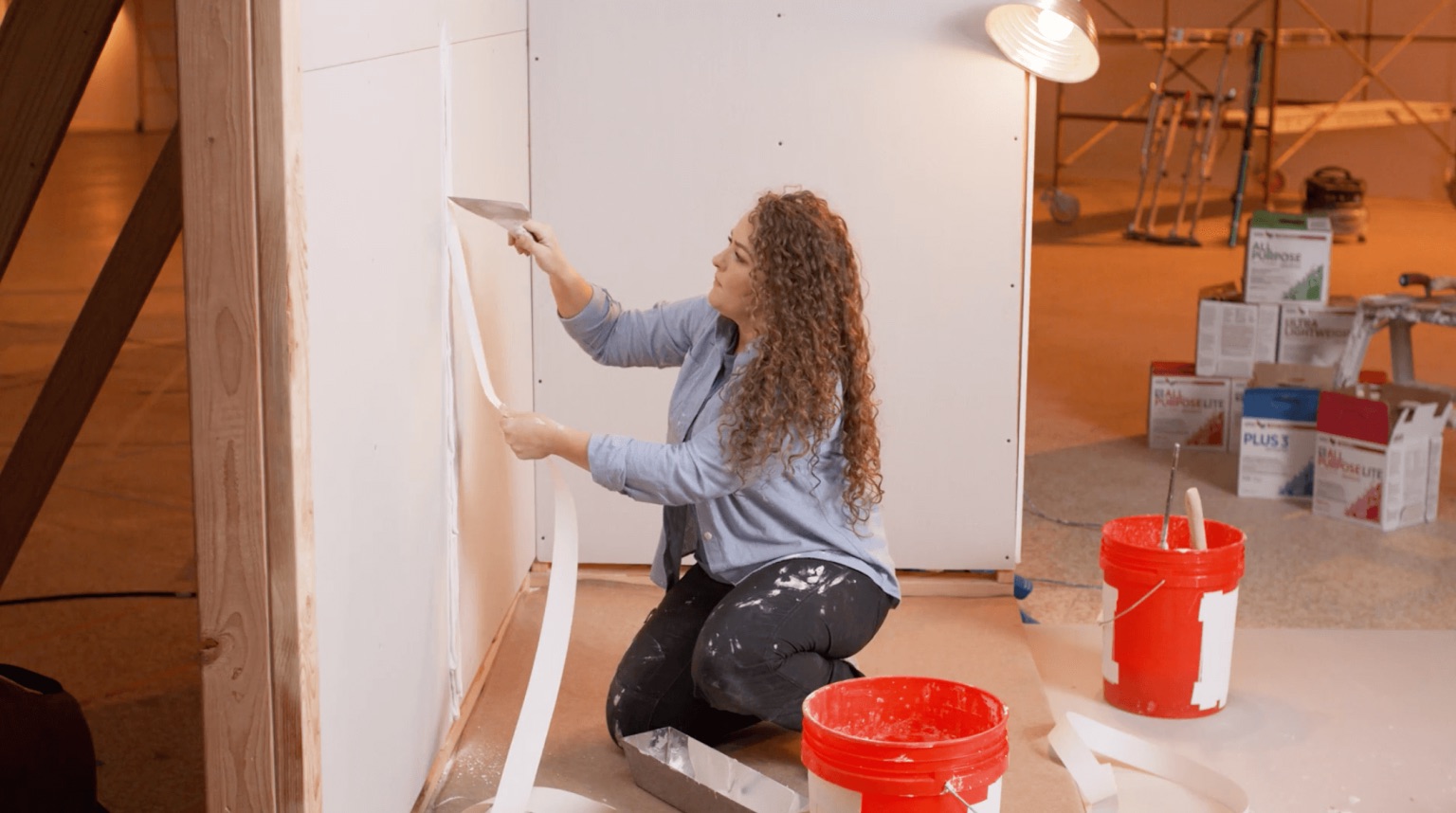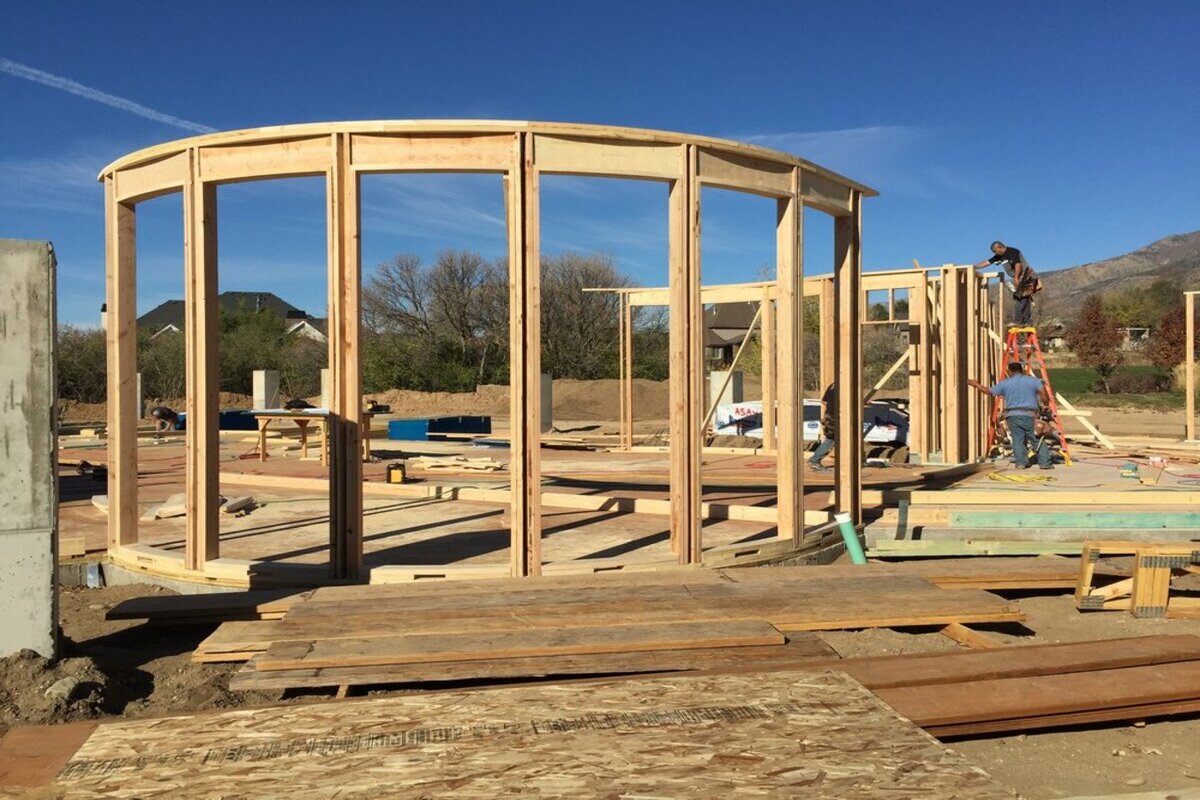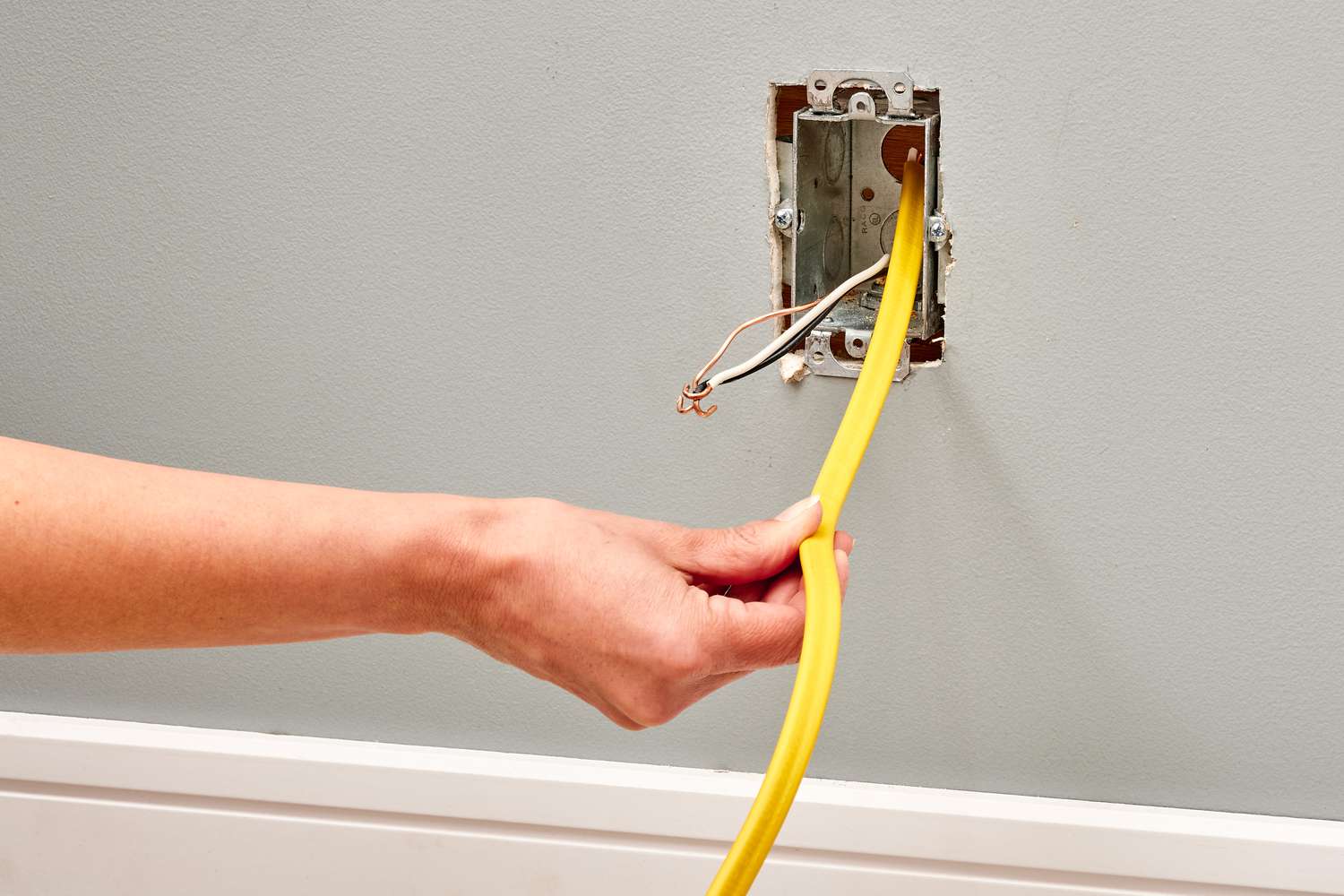Home>diy>Home Improvement>How To Write A Contract For Home Renovation


Home Improvement
How To Write A Contract For Home Renovation
Modified: March 6, 2024
Learn how to write a comprehensive and effective contract for your home improvement project with our step-by-step guide on home renovation contracts.
(Many of the links in this article redirect to a specific reviewed product. Your purchase of these products through affiliate links helps to generate commission for Storables.com, at no extra cost. Learn more)
Introduction
Welcome to the world of home renovation! Whether you’re looking to update a single room or undertake a complete house remodel, it’s important to have a well-crafted contract in place. A home renovation contract serves as a legally binding agreement between you and the contractor, outlining the scope of the project, timeline, budget, and other essential details. By having a comprehensive contract in place, you can mitigate potential disputes, protect your interests, and ensure a smooth and successful home renovation.
In this article, we will guide you through the process of writing a contract for home renovation. We’ll cover the key elements to include in the contract, discuss important considerations, and provide useful tips to help you create a strong and effective agreement. So, let’s dive in and learn how to write a contract that safeguards your renovation project!
Key Takeaways:
- A well-crafted home renovation contract outlines project details, budget, timeline, and materials. It protects both parties, reduces misunderstandings, and ensures a successful renovation.
- Clear communication, defined expectations, and mutual agreement are essential for finalizing a home renovation contract. Signatures solidify the commitment and understanding of rights and obligations.
Read more: How To Write Off Home Renovations
Understanding the Scope of Home Renovation Contracts
Before you start drafting a home renovation contract, it’s crucial to have a clear understanding of the scope of work. The scope of work refers to the specific tasks and responsibilities involved in the renovation project. This includes everything from demolition and construction to plumbing, electrical work, and finishing touches.
Defining the scope of work is essential to ensure that both parties are on the same page and have a shared understanding of the project. It helps eliminate any confusion or misunderstandings that may arise during the renovation process. To effectively outline the scope of work in your contract, consider the following points:
- Project Description: Begin by providing a detailed description of the renovation project. Specify the areas of the house to be renovated and the specific tasks involved, such as painting, flooring replacement, or kitchen remodeling.
- Materials and Products: Specify whether the contractor will provide the necessary materials or if you will be responsible for the procurement. Clearly define any brand preferences, quality standards, or specific products that should be used.
- Permits and Approvals: Determine who will be responsible for obtaining the necessary permits and approvals from local authorities. Ensure that compliance with building codes and regulations is included in the contract.
- Timeline: Define the expected start and end date of the renovation project. Break down the timeline into specific milestones or phases to track progress and ensure timely completion.
Remember to use clear and concise language when describing the scope of work. This will help avoid any misinterpretation and reduce the likelihood of disputes later on.
In addition, it’s important to be flexible and allow for potential changes or unforeseen issues that may arise during the renovation process. Including a clause that outlines the procedure for handling changes, such as additional work or modifications to the original plan, will help keep both parties aligned and prevent sudden disagreements.
Identifying the Parties involved in the Contract
When writing a contract for home renovation, it is crucial to clearly identify and define the parties involved. This helps establish the legal framework of the agreement and ensures that all parties understand their roles and responsibilities. In general, there are two main parties involved in a home renovation contract:
- The Client: The client is the homeowner or property owner who is seeking to have the renovation work done. They are the party who will be paying for the renovation services and have a vested interest in the successful completion of the project.
- The Contractor: The contractor is the individual or company responsible for carrying out the renovation work. They are the licensed professionals with the necessary expertise and experience to complete the project. The contractor will oversee the construction activities, manage the subcontractors, and ensure compliance with building codes and regulations.
When identifying the parties in your contract, it’s important to include their full legal names, addresses, and contact information. This ensures that there is no confusion regarding the specific individuals or entities involved in the agreement. You may also include the contractor’s license number, if applicable, to verify their credentials and qualifications.
In addition to identifying the primary parties, you may also want to specify any subcontractors or suppliers who will be involved in the renovation project. While subcontractors and suppliers may not be signatories to the contract, their information can be included as part of the contract for transparency and clarity.
Example:
Client:
Name: John Smith
Address: 123 Main Street, Anytown, USA
Email: johnsmith@email.com
Phone: (555) 123-4567
Contractor:
Company Name: ABC Construction
Address: 456 Oak Avenue, Anycity, USA
Email: info@abcconstruction.com
Phone: (555) 987-6543
License Number: 12345
Remember, accurately identifying the parties involved in the contract helps establish a clear and legally binding agreement between the client and the contractor. It provides a foundation for effective communication and sets the stage for a successful home renovation project.
Defining the Project and Goals
One of the most important aspects of a home renovation contract is clearly defining the project and its goals. This section provides a detailed description of the desired outcome of the renovation and sets expectations for the contractor. Here are some key points to consider when defining the project and goals in your contract:
- Project Description: Start by providing a comprehensive description of the project. Include information about the specific areas of the house that will be renovated, such as bathrooms, kitchen, or living spaces. Describe in detail the changes or improvements you are seeking, whether it’s a complete remodel or specific upgrades.
- Design Specifications: If you have specific design requirements or preferences, such as materials, colors, or architectural elements, clearly outline them in the contract. This helps ensure that your vision for the project is accurately conveyed to the contractor.
- Functional Goals: Identify the functional goals of the renovation project. For example, if you want to create a more open floor plan, improve energy efficiency, or enhance storage space, clearly state these objectives in the contract.
- Quality Standards: Specify the quality standards you expect for the materials and workmanship. This can include details about the grade of materials to be used, durability requirements, and any certifications or specific industry standards that should be followed.
The goal of defining the project and its goals in the contract is to ensure that both parties have a shared understanding of what needs to be achieved. It helps prevent miscommunication and ensures that the final result aligns with your expectations.
Example:
The project involves the renovation of the kitchen and two bathrooms in the residential property located at 123 Main Street. The scope of work includes removing existing fixtures, cabinetry, and flooring. New plumbing and electrical work will be installed, along with new cabinets, countertops, and appliances. The design specifications include a modern and functional layout, with high-quality and sustainable materials. The goal of the project is to create a stylish and efficient kitchen and bathrooms that meet the client’s preferences and enhance the value of the property.
By clearly defining the project and its goals in the contract, you provide a roadmap for the contractor and ensure that everyone is on the same page from the beginning. This helps set a solid foundation for a successful home renovation.
Establishing Project Timeline and Deadlines
When undertaking a home renovation project, it is essential to establish a project timeline and set realistic deadlines. This section of the contract outlines the expected duration of the renovation and provides a clear schedule for completion. Here are some key points to consider when establishing the project timeline:
- Start Date: Specify the agreed-upon start date for the renovation project. This is the date when the contractor will begin work on the property.
- Milestones/Phases: Break down the renovation project into specific milestones or phases. This helps track progress and ensures that the project is moving forward as planned. For example, you can define milestones for demolition, rough-in work, installation, and finishing touches.
- Completion Date: Set a realistic completion date for the entire project. This is the date by which the renovation should be substantially completed, allowing for any final touches or minor adjustments.
- Deadlines for Specific Tasks: If there are any specific tasks within the project that have their own completion deadlines, clearly outline them in the contract. This could include tasks such as obtaining permits, ordering custom materials, or scheduling inspections.
- Contingencies: It’s important to include contingencies in the project timeline to account for unforeseen circumstances or delays that may arise during the renovation process. This ensures that there is flexibility built into the schedule.
Establishing a clear project timeline and setting deadlines helps keep the renovation project on track and allows both parties to manage their expectations. It provides a framework for monitoring progress and allows for timely completion of the project.
Example:
The renovation project is expected to start on June 1, 20XX, and will progress according to the following timeline:
- Phase 1: Demolition and Prep Work – June 1 to June 7, 20XX
- Phase 2: Rough-In Work (Plumbing, Electrical, etc.) – June 8 to June 14, 20XX
- Phase 3: Installation of Cabinets, Fixtures, and Appliances – June 15 to June 21, 20XX
- Phase 4: Flooring and Finishing Touches – June 22 to June 28, 20XX
- Final Touches and Cleanup – June 29 to June 30, 20XX
- Expected Substantial Completion Date – June 30, 20XX
By clearly establishing a project timeline and setting deadlines, you ensure that everyone understands the expected timeframe for the renovation project. This helps in effective project management and smooth coordination between the client and the contractor.
Read more: How To Write Up A Landscaping Contract
Determining the Budget and Payment Terms
When embarking on a home renovation project, it is crucial to establish a clear and realistic budget and outline the payment terms in the contract. This section ensures that both parties have a mutual understanding of the financial aspects of the project. Here are some key points to consider when determining the budget and payment terms:
- Budget Allocation: Specify the total budget for the renovation project. This includes the cost of materials, labor, permits, and any other expenses associated with the project. Be sure to account for contingencies and unexpected costs that may arise during the renovation.
- Payment Schedule: Define the payment schedule in the contract. This outlines when and how payments will be made throughout the course of the project. Common payment structures include a down payment, installment payments based on project milestones, and a final payment upon completion.
- Payment Terms: Clearly state the payment terms, including the preferred method of payment (e.g., check, bank transfer) and any applicable late fees or penalties for delayed payments. It’s important to be specific about the due dates for each payment and outline any grace period that may be granted.
- Change Orders: Discuss how changes to the original scope of work or additional work requested by the client will be addressed and billed. Outline the process for issuing change orders and the associated cost implications.
- Materials and Labor: Indicate whether the budget includes the cost of materials or if they will be billed separately. If the client is responsible for purchasing materials, specify the reimbursement process and any limitations on the types of materials that can be used.
Establishing the budget and payment terms in the contract helps ensure transparency and financial clarity throughout the renovation project. It helps prevent misunderstandings and allows both parties to plan and allocate funds accordingly.
Example:
The total budget for the renovation project is $50,000. Payments will be made according to the following schedule:
- 25% down payment ($12,500) due upon signing the contract
- 25% payment ($12,500) due upon substantial completion of Phase 2
- 25% payment ($12,500) due upon substantial completion of Phase 3
- 20% payment ($10,000) due upon substantial completion of Phase 4
- 5% final payment ($2,500) due upon final completion and client’s satisfaction
By determining the budget and outlining the payment terms in the contract, you create a clear understanding of the financial obligations and expectations for both the client and the contractor. This helps maintain transparency and fosters a healthy working relationship throughout the renovation process.
Be specific about the scope of work, timeline, payment schedule, and any warranties or guarantees. Include details about materials and finishes to avoid misunderstandings.
Outlining Materials and Workmanship Specifications
Outlining the materials and workmanship specifications in your home renovation contract is essential for ensuring that the project meets your expectations in terms of quality and aesthetics. This section provides detailed information about the materials to be used, the standards of workmanship, and any special requirements. Here are some key points to consider when outlining materials and workmanship specifications:
- Materials: Specify the types of materials that will be used for each aspect of the renovation project. This can include flooring, cabinetry, fixtures, appliances, paint, and any other relevant items. If you have specific brand preferences, colors, or finishes, be sure to include them in the contract.
- Quality Standards: Define the quality standards that should be met for the materials and workmanship. This can range from basic industry standards to higher-level specifications for premium quality and durability. Specify any certifications or testing requirements that the materials must meet.
- Substitutions: If there is a possibility of the contractor needing to substitute materials due to availability or other factors, outline the process for obtaining approval for substitutions. Specify any conditions or requirements that must be met for the proposed substitute to be accepted.
- Workmanship: Clearly articulate the level of workmanship expected from the contractor. This includes requirements for craftsmanship, attention to detail, and adherence to industry best practices. Any specific techniques or procedures that should be followed can also be stated.
- Finishes and Fixtures: If there are specific finishes or fixtures that need special attention, such as custom tiling or intricate carpentry work, provide explicit detail regarding your expectations. Include reference materials, such as photographs or drawings, to illustrate the desired outcome when necessary.
By outlining materials and workmanship specifications, you ensure that both parties have a clear understanding of the quality and aesthetic requirements. This helps avoid any misunderstandings or disputes during the renovation project.
Example:
Materials:
– Flooring: Engineered hardwood flooring, preferably in a medium oak finish.
– Cabinets: Solid wood cabinets with soft-closing hinges and brushed nickel hardware.
– Countertops: Quartz countertops with a thickness of at least 2 centimeters, in a light gray color.
– Fixtures: Stainless steel appliances, undermount sink with a chrome faucet, and LED lighting fixtures throughout the renovated areas.
– Paint: Zero-VOC paint in neutral colors such as white or light gray.
Quality Standards:
– Materials should meet or exceed industry standards and warranty requirements.
– All workmanship should be carried out by qualified professionals and in compliance with applicable building codes.
– Finishes should be smooth and free from defects, such as chips, scratches, or uneven surfaces.
– Installation should be precise and accurately aligned, ensuring that all fixtures and components are securely fitted.
By outlining the materials and workmanship specifications in the contract, you provide a clear guideline for the contractor to follow, ensuring that the final result meets your expectations and satisfies your vision for the renovation project.
Addressing Changes and Modifications
During a home renovation project, it is not uncommon for changes or modifications to arise. These changes can be due to unforeseen circumstances, evolving design preferences, or the need to address issues that were not originally anticipated. To effectively address changes and modifications, it is important to include a clause in the contract that outlines the process and implications. Here are some key points to consider when addressing changes and modifications in your contract:
- Change Order Procedure: Define the process for initiating and approving changes or modifications to the original scope of work. Specify that any changes must be requested in writing, and outline who has the authority to approve or reject change orders.
- Cost and Time Adjustments: State that any changes or modifications to the project may result in adjustments to the budget and timeline. Clearly indicate that the client will be responsible for any additional costs incurred as a result of the changes, including materials, labor, and any associated fees. Discuss how potential delays caused by changes will be addressed.
- Documentation of Changes: Emphasize the importance of documenting all changes and modifications in writing, including detailed descriptions, cost estimates, and revised schedules. This helps maintain clarity and accountability throughout the project and serves as a reference for future discussions or disputes.
- Approval Process: Specify that both parties must agree in writing to any changes or modifications before they can be implemented. This ensures that there is a mutual understanding and eliminates the potential for misunderstandings or disagreements later on.
- Scope Creep: Clearly communicate that any work performed beyond the agreed-upon scope of work will be considered a change or modification and subject to the change order procedure. This prevents scope creep and helps manage expectations.
By addressing changes and modifications in the contract, you establish a framework for managing alterations to the project’s original plan. This helps maintain transparency, minimizes misunderstandings, and ensures that all parties are aware of the implications of any changes.
Example:
Change Orders:
– Any changes or modifications to the original scope of work must be submitted in writing by the client.
– Changes will be evaluated and cost estimates will be provided by the contractor within a specified timeframe.
– The client must approve the change order in writing before any work can commence.
– Any additional costs resulting from the change order will be added to the total project budget, and adjustments to the payment schedule may be required.
– The timeline for completion may be adjusted to accommodate the changes, and any associated delays will be communicated to the client.
By addressing changes and modifications in the contract, you ensure that all parties are aware of the process and potential implications. This helps manage expectations, avoid disputes, and maintain a productive working relationship throughout the renovation project.
Including Insurance and Liability Provisions
When drafting a home renovation contract, it is important to include provisions regarding insurance and liability to protect both parties involved in the project. These provisions help mitigate risks and ensure that the necessary coverage is in place. Here are some key points to consider when including insurance and liability provisions in your contract:
- Insurance Coverage: Specify that the contractor must carry adequate insurance coverage, including general liability insurance, workers’ compensation insurance, and builder’s risk insurance. Request proof of insurance from the contractor before work commences and include a provision that requires the contractor to maintain insurance throughout the duration of the project.
- Indemnification: Include an indemnification clause that states the contractor will indemnify and hold the client harmless from any legal claims, damages, or liabilities arising from the renovation project. This protects the client from any legal or financial consequences resulting from the contractor’s actions or negligence.
- Limitation of Liability: Define the limits of liability for both the client and the contractor. This ensures that neither party is held responsible for damages that exceed the agreed-upon limit, except in cases of gross negligence or intentional misconduct.
- Subcontractors and Suppliers: Clarify that the contractor is responsible for the actions and liabilities of any subcontractors or suppliers they hire for the project. Ensure that the contract includes a provision requiring subcontractors and suppliers to carry their own insurance coverage and indemnify both the client and the contractor from any claims or damages arising from their work.
- Notice of Claims: Establish a procedure for reporting and resolving any claims that may arise during the project. Outline the timeframe within which claims must be reported and the process for dispute resolution, such as mediation or arbitration.
By including insurance and liability provisions in the contract, you create a framework that protects both parties and helps minimize potential risks associated with the renovation project. It provides a sense of security and ensures that adequate measures are in place to handle any unforeseen circumstances.
Example:
Insurance and Liability:
– The contractor shall maintain general liability insurance with coverage of at least $1 million per occurrence and $2 million aggregate.
– The contractor shall carry workers’ compensation insurance as required by law to cover all employees working on the project.
– The contractor will provide proof of insurance coverage before work starts and maintain coverage throughout the duration of the project.
– The client and the contractor agree to indemnify and hold each other harmless from any claims, damages, or liabilities arising from the renovation project, except in cases of gross negligence or intentional misconduct.
– The total liability of either party under this agreement shall not exceed the contract price, except as otherwise provided by applicable law.
By including insurance and liability provisions in the contract, you protect both parties from potential risks and ensure that adequate measures are in place to handle any unforeseen events during the renovation project. This provides peace of mind and promotes a smooth working relationship.
Reviewing Termination and Dispute Resolution Clauses
When creating a home renovation contract, it is crucial to include termination and dispute resolution clauses to address potential issues that may arise during the course of the project. These clauses provide a framework for resolving disputes and allow for the termination of the contract under certain circumstances. Here are some key points to consider when reviewing termination and dispute resolution clauses:
- Termination for Convenience: Include a clause that allows either party to terminate the contract for convenience, with proper notice. This provides flexibility in case unforeseen circumstances or changes in project requirements make it necessary to end the agreement.
- Termination for Breach: Specify the conditions that may lead to termination due to breach of contract. This includes failure to perform obligations, failure to adhere to specifications, or substantial delays beyond reasonable expectations. Outline the procedure for notifying the breaching party and allow a reasonable opportunity for remedy before termination.
- Dispute Resolution: Include a clause that specifies the preferred method of resolving disputes. This can include mediation, arbitration, or litigation. Define the process for initiating dispute resolution procedures and identify the applicable jurisdiction or governing law.
- Attorney’s Fees and Costs: Discuss the allocation of attorney’s fees and costs related to any legal proceedings arising from the contract or disputes. Specify whether each party will be responsible for their own expenses or if the prevailing party will be entitled to seek reimbursement of their attorney’s fees and costs from the non-prevailing party.
- Severability: Include a severability clause to ensure that if any provision of the contract is deemed invalid or unenforceable, the remaining provisions will still be upheld.
Reviewing and including termination and dispute resolution clauses in the contract demonstrates a proactive approach to potential conflicts and provides a clear process for resolution. It helps protect both parties’ interests and ensures a fair and efficient mechanism for addressing disputes.
Example:
Termination and Dispute Resolution:
– Either party may terminate the contract for convenience with a written notice of [insert time period].
– Either party may terminate the contract for material breach if the breaching party fails to remedy the breach within [insert time period] of receiving notice.
– In the event of a dispute arising from this contract, the parties agree to first attempt mediation. If mediation is unsuccessful, the dispute will be resolved through binding arbitration in accordance with the rules of [insert arbitration organization].
– Each party shall bear their own attorney’s fees and costs, unless otherwise determined by a court of competent jurisdiction.
– If any provision of this contract is found to be invalid or unenforceable, the remaining provisions shall remain in full force and effect.
By including termination and dispute resolution clauses in the contract, you provide transparency and clarity in handling potential conflicts. This allows for a smoother resolution process and helps maintain a productive working relationship between the client and the contractor.
Finalizing the Contract and Obtaining Signatures
Finalizing the contract and obtaining signatures is the last crucial step in the process of creating a home renovation agreement. This step ensures that both parties are fully committed to the terms and conditions established in the contract. Here are some key points to consider when finalizing the contract and obtaining signatures:
- Review and Confirmation: Before obtaining signatures, review the entire contract to ensure that all the agreed-upon terms and conditions are accurately reflected. Double-check that all relevant sections, such as scope of work, payment terms, and insurance provisions, have been included and are satisfactory.
- Clear and Understandable Language: Use clear and understandable language throughout the contract to avoid confusion and misinterpretation. Make sure that both parties have a full understanding of the terms and obligations outlined in the agreement.
- Execution of Signatures: Once the contract is reviewed and finalized, both parties should sign and date the document. This can be done either physically with hard copies or electronically through secure online platforms. Ensure that there is ample space provided for signatures, printed names, and dates.
- Witness or Notary: Depending on the local laws and the significance of the project, it may be necessary to have the signatures witnessed or notarized. Consult with legal professionals to determine if this step is required for your specific situation.
- Distribution of Signed Copies: After the contract is signed, provide each party with a copy of the fully executed contract. This ensures that both the client and the contractor have a record of the agreement, including all signed amendments or change orders.
Finalizing the contract and obtaining signatures is a crucial step to solidify the agreement between the client and the contractor. It ensures that both parties are fully aware of their rights and obligations throughout the home renovation project.
Example:
The undersigned hereby acknowledge that they have reviewed and agreed to the terms and conditions outlined in this home renovation contract. Each party acknowledges having received a fully executed copy of this contract.
Client:
________________________________________
[Client’s Full Name]
[Client’s Signature]
[Date]
Contractor:
________________________________________
[Contractor’s Full Name]
[Contractor’s Signature]
[Date]
By finalizing the contract and obtaining signatures, you ensure that both parties are committed to the agreed-upon terms and that there is a clear understanding of the rights and obligations defined in the contract. This step provides a solid foundation for a successful and mutually beneficial home renovation project.
Conclusion
Writing a comprehensive and well-crafted contract for your home renovation project is crucial for a successful and hassle-free experience. By taking the time to understand the scope of work, identifying the parties involved, and defining the project goals, you can lay the foundation for a clear and mutually beneficial agreement.
Establishing a project timeline, determining the budget and payment terms, and outlining materials and workmanship specifications provide the necessary framework for the execution of the project. By addressing changes and modifications, including insurance and liability provisions, and reviewing termination and dispute resolution clauses, you ensure that both parties are protected and have a plan in place to handle potential issues.
Finally, by finalizing the contract and obtaining signatures, you solidify the agreement and create a legally binding document that outlines the rights and responsibilities of each party. This helps maintain transparency, manage expectations, and foster a positive working relationship throughout the home renovation process.
Remember, a well-written contract serves as a safeguard for both the client and the contractor. It ensures that everyone is on the same page, reduces the potential for misunderstandings, and provides recourse in the event of disputes or breaches of contract.
As you embark on your home renovation journey, we hope that this guide has provided valuable insights and guidance for writing a comprehensive and engaging contract. By following these recommendations and consulting legal professionals when necessary, you can set the stage for a successful and satisfactory home renovation experience.
Good luck with your home renovation project!
Frequently Asked Questions about How To Write A Contract For Home Renovation
Was this page helpful?
At Storables.com, we guarantee accurate and reliable information. Our content, validated by Expert Board Contributors, is crafted following stringent Editorial Policies. We're committed to providing you with well-researched, expert-backed insights for all your informational needs.














0 thoughts on “How To Write A Contract For Home Renovation”